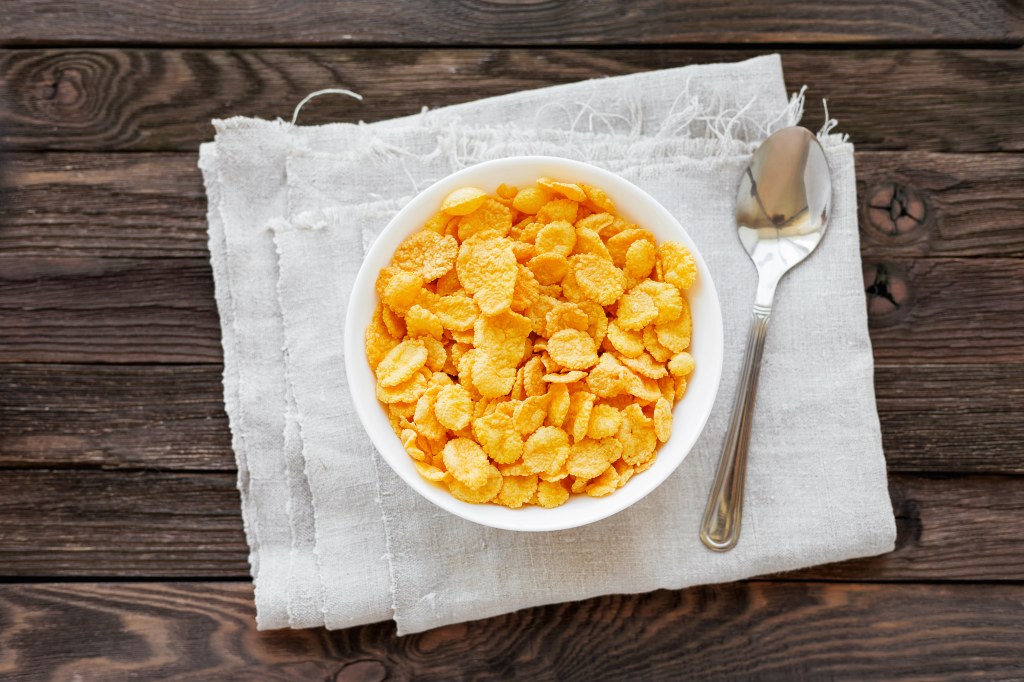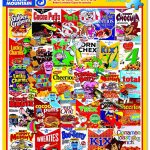The Ultimate Guide To Milk Cereal Calories: Unveiling The Secrets For A Healthy Lifestyle
Milk Cereal Calories: A Comprehensive Guide to Understanding the Nutritional Value of Your Breakfast
Introduction
Dear Cereal Connoisseur,
3 Picture Gallery: The Ultimate Guide To Milk Cereal Calories: Unveiling The Secrets For A Healthy Lifestyle



Welcome to the world of milk cereal calories, where we unravel the mysteries behind the nutritional value of your favorite breakfast. In this article, we will dive deep into the calorie content of milk cereal, exploring its benefits, drawbacks, and everything in between. So, grab your cereal bowl and join us on this informative journey!

Image Source: livestrong.com
Are you curious about how many calories are in your morning bowl of cereal? Or perhaps you’re wondering if milk cereal is a healthy choice for your diet? We’ve got you covered! This article will provide you with all the essential information you need to make informed decisions about your cereal consumption.
So, without further ado, let’s explore the world of milk cereal calories and discover the truth behind this beloved breakfast staple.
Table: Milk Cereal Calories

Image Source: ftscrt.com
Cereal Type
Calories per Serving
Corn Flakes
100
Rice Krispies
110
Wheaties
120

Image Source: livestrong.com
Honey Nut Cheerios
140
Frosted Flakes
150
What are Milk Cereal Calories? 🥣
Milk cereal calories refer to the amount of energy provided by a serving of cereal combined with milk. It is crucial to understand the calorie content of your breakfast as it plays a significant role in maintaining a balanced diet and managing your weight.
Knowing the calorie content of different cereal types can help you make informed choices about portion sizes and the overall nutritional balance of your breakfast.
Who Should Pay Attention to Milk Cereal Calories? 🤔
Everyone can benefit from understanding milk cereal calories, but it is particularly important for individuals who are watching their weight, managing health conditions, or following a specific dietary plan. If you fall into any of these categories, paying attention to the calorie content of your cereal can help you achieve your health and fitness goals.
Additionally, parents who want to ensure their children are consuming a balanced breakfast can also benefit from being aware of milk cereal calories.
When Should You Consider Milk Cereal Calories? 🕑
You should consider milk cereal calories whenever you are planning your breakfast or evaluating the nutritional value of your current cereal choice. Whether you’re trying to lose weight, maintain a healthy lifestyle, or simply make more informed dietary decisions, understanding the calorie content of your breakfast is essential.
By considering milk cereal calories, you can make adjustments to your portion sizes or choose cereals with lower calorie content to align with your health goals.
Where Can You Find Information on Milk Cereal Calories? 🌍
Information on milk cereal calories can be found on the nutrition labels of cereal boxes or on the manufacturers’ websites. These sources provide detailed information about the calorie content of different cereals and can help you compare and choose the best options for your diet.
Additionally, nutrition websites and mobile applications dedicated to tracking and analyzing food can also be valuable resources to find information on milk cereal calories.
Why is it Important to Understand Milk Cereal Calories? 🤷♀️
Understanding milk cereal calories is crucial for several reasons:
Weight Management: If you are trying to lose, gain, or maintain weight, being aware of the calorie content of your cereal allows you to make more informed decisions about portion control and overall calorie intake.
Health and Nutrition: Milk cereal calories provide insight into the nutritional value of your breakfast. By knowing the calorie content, you can ensure you are getting a balanced meal that contributes to your overall health and well-being.
Dietary Restrictions: For individuals with specific dietary restrictions or health conditions, understanding milk cereal calories can help them make suitable choices that align with their needs.
Meal Planning: By considering the calorie content of your cereal, you can plan your meals more effectively, ensuring a well-rounded diet throughout the day.
How Can You Make the Most of Milk Cereal Calories? 🌟
To maximize the benefits of milk cereal calories, consider the following tips:
Portion Control: Pay attention to recommended serving sizes to avoid consuming excessive calories.
Choose Nutrient-Rich Options: Look for cereals that are fortified with vitamins and minerals to enhance the nutritional value of your breakfast.
Pair with Healthy Additions: Add fresh fruits, nuts, or seeds to your cereal to boost its nutritional content without significantly increasing the calorie count.
Be Mindful of Toppings: Sweetened cereals or those topped with sugary additions may significantly increase the calorie content. Opt for healthier alternatives or limit the amount of sweetener you use.
Consider Alternative Milk Options: If you’re looking to reduce calorie intake, consider using low-fat or plant-based milk alternatives instead of whole milk.
Advantages and Disadvantages of Milk Cereal Calories
Advantages:
Convenient and Time-Saving: Milk cereal is a quick and easy breakfast option, ideal for busy mornings.
Rich in Essential Nutrients: Many cereals are fortified with vitamins and minerals, providing a convenient source of essential nutrients.
Dietary Variety: With numerous cereal options available, you can choose from a wide range of flavors and ingredients to suit your preferences.
Portion Control: Cereal packaging often includes recommended serving sizes, making it easier to manage portion control.
Long Shelf Life: Cereals have a long shelf life, allowing you to stock up and enjoy them whenever you desire.
Disadvantages:
High Sugar Content: Some cereals can be high in added sugars, which can contribute to health issues such as weight gain and increased risk of chronic diseases.
Low Fiber Content: Certain cereals may lack sufficient fiber, which plays a vital role in digestive health and maintaining satiety.
Allergies and Sensitivities: Individuals with allergies or sensitivities to specific grains, gluten, or other ingredients may need to seek alternative cereal options.
Processing and Additives: Certain cereals may undergo extensive processing and contain additives that may not align with certain dietary preferences or restrictions.
May Not Provide Long-Lasting Energy: Cereals high in refined carbohydrates may provide a quick energy boost but may not sustain energy levels throughout the morning.
Frequently Asked Questions (FAQs)
1. Is it necessary to count milk cereal calories for a balanced diet?
Yes, counting milk cereal calories can help you maintain a balanced diet by ensuring you are consuming an appropriate amount of calories for your health and weight goals.
2. Can I eat milk cereal if I am on a weight loss journey?
Yes, you can enjoy milk cereal while on a weight loss journey. Opt for lower-calorie cereals and practice portion control to align with your weight loss goals.
3. Are there any milk cereal options suitable for individuals with dietary restrictions?
Yes, there are numerous milk cereal options available for individuals with dietary restrictions, including gluten-free, vegan, and allergen-free varieties. Check the packaging or product information to find suitable options.
4. Can I substitute milk with a non-dairy alternative in my cereal?
Absolutely! Non-dairy milk alternatives such as almond milk, soy milk, or oat milk can be used as substitutes for traditional milk in your cereal.
5. Are there any cereal options with no added sugars?
Yes, there are cereals available with no added sugars or cereals sweetened with natural alternatives like fruit juice concentrate or stevia. Check the nutrition label for sugar content before making a purchase.
Conclusion
Now that you have a comprehensive understanding of milk cereal calories, you can make informed decisions about your breakfast choices. Remember, paying attention to the calorie content of your cereal can help you maintain a balanced diet, manage your weight, and support your overall health and well-being.
Whether you’re a Cereal Connoisseur or simply a Cereal Enthusiast, use this knowledge to enjoy your morning bowl of milk cereal while prioritizing your nutritional needs.
Final Remarks
The information provided in this article is intended for general informational purposes only and should not be considered a substitute for professional medical advice or personalized dietary recommendations. We encourage you to consult with a qualified healthcare professional or registered dietitian for guidance tailored to your specific needs.
Remember, everyone’s nutritional requirements may vary, and it’s essential to prioritize your individual health when making dietary decisions. Enjoy your milk cereal responsibly and savor every delicious bite!
This post topic: Cereal



